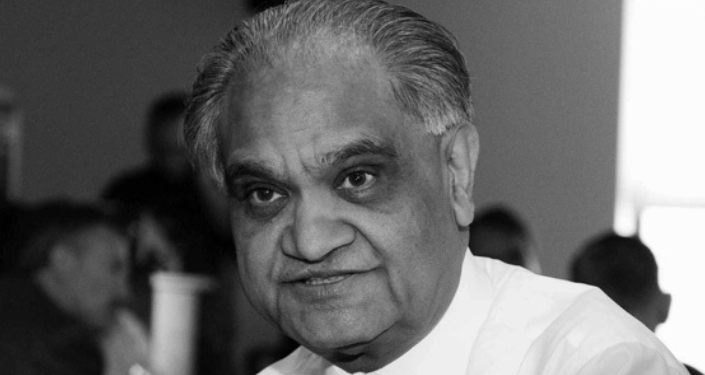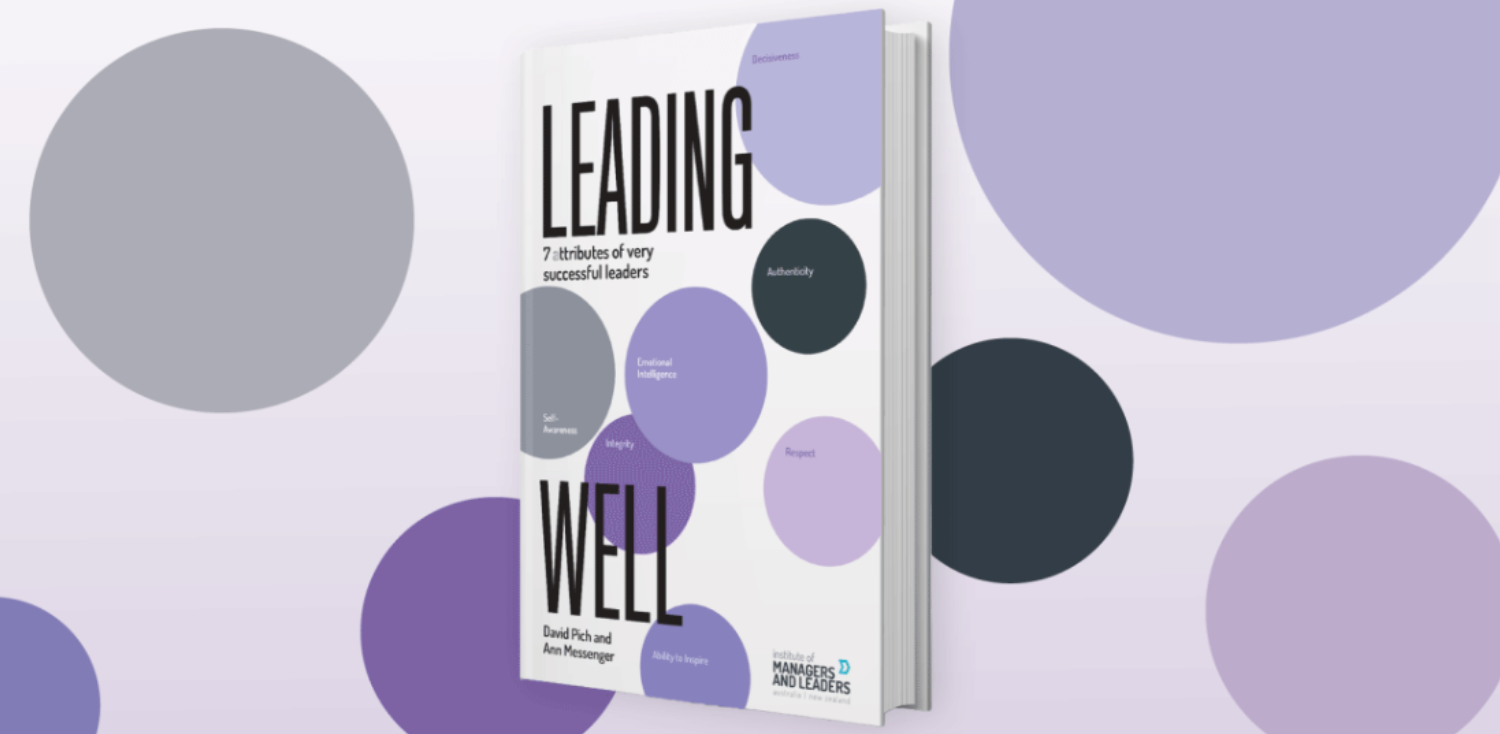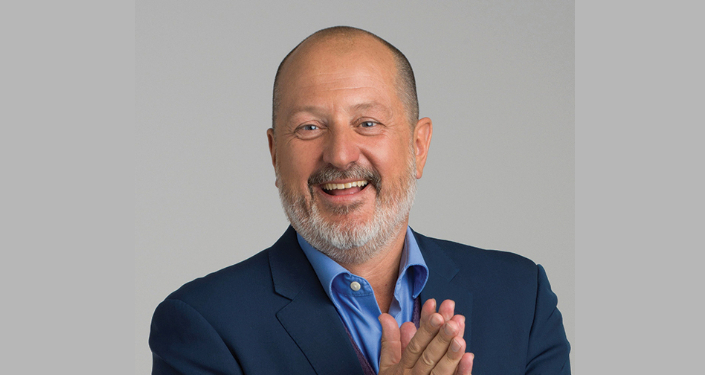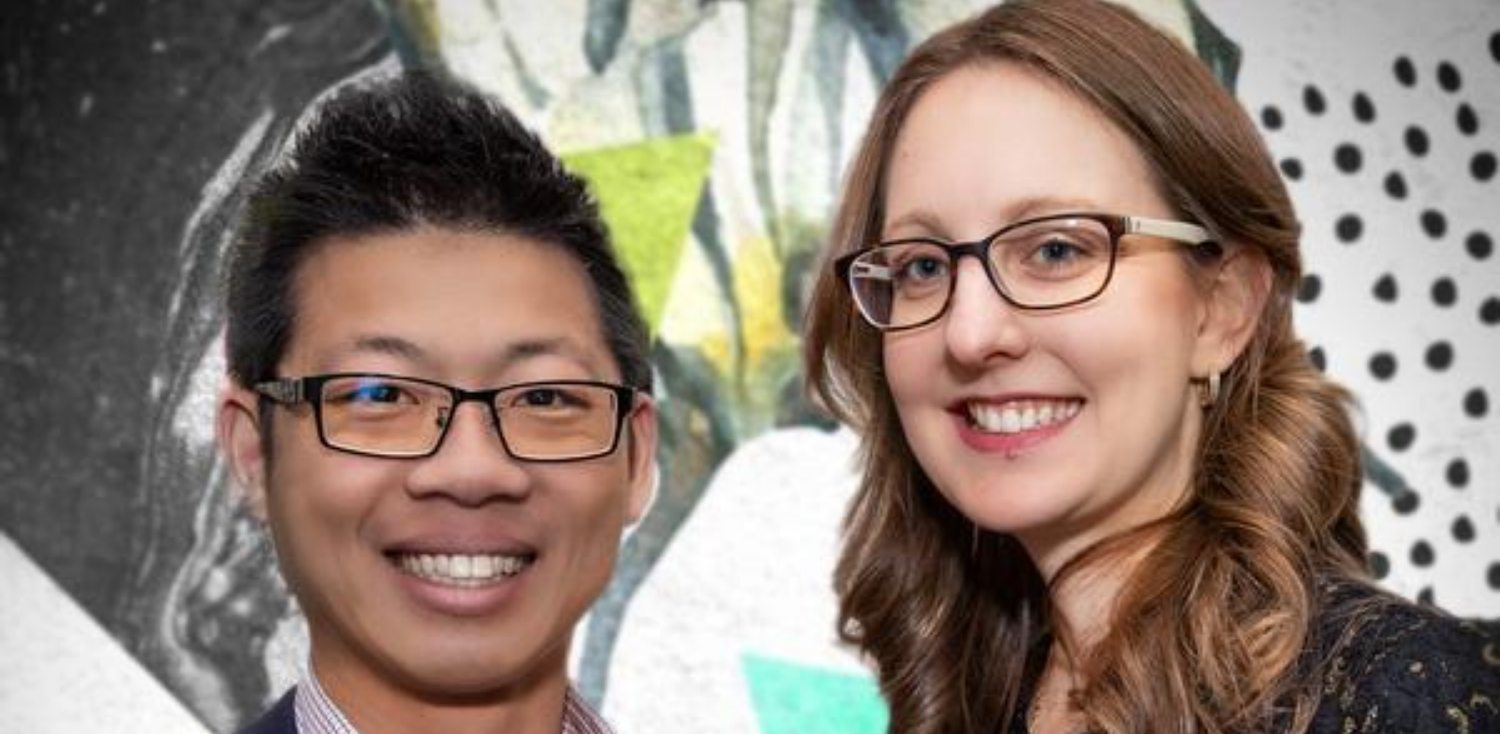Experimentation was originally a tool used by start-ups and large tech companies. But it hasn’t taken long for others to see the benefits.
Continue readingThe science of intentional leadership
House of Science CEO, Chris Duggan, shares her insights on intentional leadership from founding and leading a large and growing science education charity.
Continue readingRam Charan on the secrets of Amazon’s success
Global business adviser, Dr Ram Charan speaks to IML ANZ about what business leaders can learn from retail giant Amazon’s success.
Continue readingBooks on leading in the AI age
Booktopia’s Tracey Mills handpicks six books to help lead people through technology disruption.
Continue readingSeth Godin: 12 tips on leadership, business and marketing
His name is Seth, he’s been dubbed the King of Marketing by Forbes, and he cooks for his family every night.
He is Seth Godin, author of 19 bestsellers, including Linchpin, Permission Marketing and Purple Cow.
His daily blog has a readership in the millions.
Ahead of his virtual workshop in May 2020, the Marketing Hall of Fame inductee spoke with IML ANZ partner, The Growth Faculty. Godin shared lessons from his latest book, the #1 Wall Street Journal Bestseller and instant New York Times bestseller This is Marketing, and some fascinating personal tidbits about himself.
Empathy is all that is available to us (marketers) if we seek to change someone else. They don’t see what we see, or know what we know. We need to earn enrolment “I’m going over there, do you want to come?”
Begin with a hurdle you can leap. You have no chance of changing everyone. Begin with the smallest viable market. Understand their worldview. Use psychographics, what they believe in, not demographics.
Your followers will tell others. If the small group that you seek to serve believes in you, and trusts you, then they will tell the others (if it raises their status to tell others about you).
There is no impact unless you change someone. A lot of people in marketing say that they do their job, and run ads. I ask them, ‘What change are you seeking to make?’. ‘Oh, I’m not changing anyone,’ they say. So, I ask, ‘Then, why are you wasting my time?’. No change, no marketing.
You can’t be seen until you learn to see. Do your customers feel you see them? Every brand, every marketer makes hard decisions all the time. Are you erring on the side of looking at your banker, or looking at your customer?
Authenticity is nonsense. An authentically bad surfboard? That’s not what I want. I want consistency. I want professionalism. Add that to empathy, and you get a promise of x, y, and z. I see your fears and desires.
The marketer is the CEO, the head of customer service, she’s the supply chain. If you’re interacting with me, you are marketing. Marketing is more about doing and action, now more than ever people are buying on reputation and proof.
A brand is not a logo. Think about a logo you admire, it will be a brand you admire. A logo is a symbol. A brand is a promise. If Nike opened a hotel, you would know what it looked like, if Hyatt had a brand of sneaker you would have no idea what it would be like. Hyatt has a logo, not a brand.
Direct marketing should be measured. Conversely, brand marketing is spending the money on the prayer, the hope, the belief, that it will change someone over time. If you spend money on FB for branding, stop the measuring, don’t measure the clicks.
In every (Adwords) auction that is taking place, Google keeps 95% of the money. You do the work, take the risk, yet Google makes the bulk of the money. You need to do something unique and different, so people search for you by name.
Status is super important. If you’re a hairdresser, you’re not selling a haircut, you’re selling an improvement in a person’s status. Marketers need to be asking ‘Am I raising the status, keeping it the same, lowering it?’
Daily practises for marketers should include strategic thought. How are you serving them, how are you earning their trust? Writing a blog every day for 17 years earns people trust. Your daily practise might be making 5 phone calls today to your best customers saying ‘How’s it going, are you in a jam, how can I help?’
Secure your place for The leadership Circle with Seth Godin
IML ANZ is delighted to partner with The Growth Faculty to bring you The Leadership Circle with Seth Godin.
This is a rare opportunity for leaders and their teams to learn from this best-selling author and leadership titan. Our IML ANZ community enjoy an exclusive discount to Seth’s 3.5 hour interactive virtual workshop.
Save 40% on tickets when you book here.
Why good leadership leads to equality in the workplace
Today’s society features many global citizens. People who lived in multiple countries, speak several languages and embody different cultures. In 2019 alone, more than 100,000 migrants arrived in New Zealand. That’s why diversity matters. It brings out the best in everyone and unlocks what no one person or group could achieve alone.
On Friday, 6 March 2020, IML ANZ hosted our first International Women’s Day event in Auckland. It was a morning of informed discussion about the importance of equality in the workplace, the strategies that organisations can employ and the leadership that must underpin all these activities.
We had the chance to chat with one of the event panellists, Jacqueline Parekh CMgr FIML. She is currently the Strategic Projects Lead at Asahi Beverages and before that held a senior manager role in the field of talent and organisation with Accenture. Parekh is also a Chartered Manager, one of the first to be accredited in New Zealand.

She shared her thoughts on transitioning from a technical expert and becoming a leader, the qualities of a good leader and why she is hopeful about the future of gender equality in New Zealand.
Not just a piece of the pie
Parekh recalls that it was when she became the manager of other managers that she fully understood the crux of her role.
“Once you start to assume a management role, that’s when you’ll realise that it’s not just about competency – understanding your subject matter and executing it with excellence by then should be a given. It becomes more about rallying, motivating and coaching people to realise a goal or ambition that they otherwise wouldn’t have done by themselves,” she says.
Revealing a fondness for analysis, Parekh explains the perfect illustration for this transition. “Think of your career as a pie chart. When you start, a larger slice of the pie naturally focuses on establishing sound technical competence in your subject matter specialty,” she points out.
“But as you grow in your career, what you’ll find increasingly is cultivating leadership skills like coaching, mentoring, facilitating, resolving conflict, communicating — basically managing people – becomes the larger slice of the pie. This is the time where you realise you need to pivot from being a doer to a leader.
Good leadership underpins diversity and inclusion
Creating diverse and inclusive workplaces must start with leaders. According to Parekh, leaders must display certain qualities to influence a change in their team’s behaviour. Her top two includes:
- Integrity. Parekh believes whether it’s giving proper credit for accomplishments, acknowledging mistakes, or putting safety and quality first, great leaders exhibit integrity at all times. They do what’s right, even if that isn’t the best thing for the current project or even the bottom line.
- Self-awareness. Parekh reaffirms that this quality is one of the core components of emotional intelligence and has been cited as the most important quality for leaders to adopt. She is a firm believer of removing any blind spots that prevent you from improving as a manager and leader. Leaders must understand where their natural inclinations lie and use this knowledge to boost or compensate for them. In fact, she believes highly self-aware leaders lead higher-performing organisations.
On a positive path towards equality
Parekh counts herself lucky for joining organisations, like Asahi, that have a clear focus on equality. “Right from my first job as a graduate, it was clear to me that these organisations I’ve been a part of base their hiring decisions on merit,” she explains.
“They weren’t just interested in my achievements or whom I’ve worked for but asked many questions around cultural fit based on my experiences and personality. I could see that they wanted the richness that diversity alone brings.”
For example, Parekh’s current employer, Asahi Beverages annually review and report the gender pay gap which, as of September 2019 was around 3% against the WGEA average of 14%.
Her previous organisation, Accenture, set two clear goals: first, to achieve a gender-balanced workforce by 2025 and second, to increase the diversity of their leadership by growing the percentage of women managing directors to at least 25% by the end of 2020.
So Parekh remains positive about the future of gender equality in New Zealand. And with good reason. In 2020, New Zealand ranked 7th in the World Economic Forum’s Global Gender Gap Report.
“Empowering equality is not only morally right but economically smart,” Parekh explains.
Parekh concludes that we can see the numerous benefits resulting from a truly equal society. “Be it in employment, leadership or legislation, when we take on a more diverse outlook, we always put ourselves a step up higher than before.”
Must Read: Leading Well: 7 attributes of very successful leaders
Derek Parker offers an in-depth look into the latest book that examines seven attributes of inspiring leaders.
This is the follow-up and companion to the 2017 IML ANZ publication Leadership Matters: 7 Skills of Very Successful Leaders. That volume was concerned mainly with the technical abilities required in senior roles – what David Pich CMgr FIML, Chief Executive of IML ANZ, describes as “the perspiration of leadership” in the introduction to the new book. Leading Well focuses on the inspirational side of being a leader: the personal, emotional, and psychological aspects. The seven attributes – respect, integrity, emotional intelligence, ability to inspire, authenticity, self-awareness, and decisiveness – were chosen through consultations with IML ANZ Members.
Respect was rated as essential in a survey, a point underlined in the chapter by Pich and Jamie Getgood. The key to respect is a willingness to listen to others, talk through their concerns, and empathise with their viewpoint. This is not easy in an era of diversity but the authors take the view that Australians are a tolerant bunch when it comes to cultural differences. They look at IML ANZ’s public statement on same-sex marriage as an example, noting that it was the result of discussions with Members. Respect, they say, is not about agreeing with everyone but about understanding and consideration. An expression of genuine gratitude is also a component of respect, and something that can go a long way in building strong relationships.
It is something of a balancing act but that is true regarding many of the skills examined in the book. Michelle Gibbings’s discussion of integrity acknowledges the difficulty of acting consistently and ethically in the face of competing stakeholder demands. She sees an ongoing tension between personal courage and consciousness of the business environment but she comes down on the side of having the courage to do the right thing. Integrity, once lost, is almost impossible to rebuild.
Allison Keogh’s contribution on authenticity picks up this theme. Authenticity is about aligning thoughts, words and actions, all stemming from a core of values. Say what you mean, mean what you say: it’s the same message whether applied to individuals or organisations. If you want an example of what not to do, she says, look at some of the practices in the financial services industry uncovered by the recent inquiry into banking.
Self-awareness is the first step to becoming a great leader, according to Margot Smith FIML. It means acknowledging your weaknesses and blind spots, but it also requires taking action to improve. She suggests some training methods although honest discussions with peers and mentors can also do much. It means admitting vulnerability but it is often the only way to move forward.
Many of the themes of the book come together in the final piece, an examination of decisiveness by Bill Kernoczy and Luke Challenor. Having to make the final call on a difficult issue is often seen as the central test of leadership. And, indeed, any issue that gets to the senior levels of an organisation is going to be difficult: the easy ones are decided elsewhere. Once upon a time a CEO would tick one or another box and walk away but Kernoczy and Challenor argue that the complexity of modern business means that the gut-feeling method no longer makes sense. Instead, they lay out a process of definition, analysis, evaluation, and consultation. They look at a number of models for making decisions, establishing the common thread as a need to follow through on implementation, review and feedback.
This is consistently useful stuff. In fact, all of the chapters in the book make a point of moving from theory to practice, with step-by-step guides and tools for self-diagnosis. Another important section is a series of interviews, conducted by IML ANZ chair Ann Messenger, with outstanding leaders. Each discussion has its worth but the views of Georgie Harman, the chief executive of the beyondblue organisation, are particularly interesting, especially in the areas of authenticity and humility.
Each of the chapters of the book has important things to say but it is taking the package as a whole that provides the most insight and direction. Whether you are already in a senior position or aspire to be there, you will find a great deal of value here.

Get your copy of IML ANZ’s latest book, Leading Well: 7 attributes of very successful leaders (Major Street Publishing, A$34.95).
The book highlights seven attributes that ignite inspiring leadership. It focuses squarely on the personal attributes that can transform managers into leaders and good leaders into great leaders.
Order your copy here.
This article originally appeared in the September 2019 print edition of Leadership Matters, IML ANZ’s quarterly magazine. For editorial suggestions and enquiries, please contact karyl.estrella@managersandleaders.com.au.
Use your imagination: Why Russel Howcroft prescribes creativity for business growth
By Andy McLean MIML
When most people are asked to name today’s greatest innovators, their answers are predictable. If I were given a dollar every time I heard the names “Richard Branson”, “Sheryl Sandberg” and “Larry Page” I would probably have seed funding for my own Silicon Valley startup.
But one name that has never cropped up, until now, is: Baz Luhrmann. On the face of it, the man behind blockbuster movies like The Great Gatsby, Moulin Rouge and Romeo + Juliet is an unlikely poster boy for business innovation. But that’s who PwC’s Chief Creative Officer, Russel Howcroft, believes business leaders should seek to emulate.
“We all need to find our inner Baz,” says Howcroft. “Here’s someone who is highly creative and equally highly commercial. He’s also brave enough to put it out there.”
What Howcroft admires is the movie director’s blend of innovation and business nous. Luhrmann’s kaleidoscopic films have rewritten the creative rule book in Hollywood, while simultaneously breaking box office records. Four of the top 10 highest-grossing Australian movies of all time were directed by Luhrmann.
“I’m not talking about creativity just for the fun of it,” says Howcroft. “I believe in the power of commercial creativity. If leaders want their organisations to go beyond net market growth, then they have to apply creativity. It’s the number one tool for brand development, generating demand, increasing your margin, and selling more.
“The alternative is to keep doing the same thing every day and expecting something different to happen – and that’s the definition of insanity. Australian and New Zealand businesses need to step outside their comfort zone if they want to achieve meaningful growth.”
As a panellist on the ABC’s Gruen television series, Howcroft is one of Australia’s best-known authorities on marketing and advertising. He argues that creativity is not only a macroeconomic concern or a strategic business priority – but also the key to safeguarding the future careers of managers and leaders.
“There’s a lot of talk about jobs being replaced by artificial intelligence, and you know what? Our creative capacity is what can keep humans gainfully employed. That’s why the Chinese are putting creativity front and centre in their education system. That’s why the Indonesians held the first global conference on the creative economy last year. And that’s why Australia and New Zealand have to prioritise creativity too.”
START AT THE TOP
So how can organisations identify the latent creativity that exists within the workforce?
“We’ve got to start at the top and as leaders say, ‘Yes, creativity matters and it’s a strategic priority for us’,” suggests Howcroft. “I recommend appointing someone in the executive team to champion ideas and seek them out. If that’s the CEO or CMO, then that’s great. If not, appoint someone who is highly energised by creativity in all its forms. Get them to focus on improving performance and finding new innovations.”
When asked to describe what a creative organisation looks and feels like, Howcroft ’s eyes light up. “I think the number one behaviour you see is respect for ideas and respect for the individual’s desire to put ideas on the table. It’s really important that everyone in the organisation feels comfortable having a conversation about their ideas. They won’t always be great ideas but you need to celebrate having the conversation because it might lead to something that is powerful and really good for the business.”
Howcroft ’s advice is resoundingly supported by a 2017 McKinsey study, which found that creative companies are far more likely to achieve better financial performance than other industry peers. McKinsey said creative companies were distinguishable from others because they made creativity and innovation a priority during business-as-usual activities. It also said creative organisations were “customer fanatics” who got products to market faster, tracked progress, and adapted to early market signals.
Howcroft adds that a culture of creativity requires leaders to recruit and retain people with an aptitude for innovation and ideas. To illustrate this, he recalls his time working in advertising agencies: “I used to say, ‘You’ve got two choices. You can look at the mirror or you can look out the window. I’m only interested in people who are looking out the window’.
“What leaders should be careful of is a culture where people are inward looking. You can’t just rely on algorithms and your newsfeed for inspiration – you’ll end up taking your business down a narrow rabbit hole. Instead, I look for people who are voracious consumers of all things cultural.”
COMMERCIALISING CREATIVITY FOR CLIENTS
Howcroft’s belief in commercial creativity is what guides much of his work at PwC. The focus is on developing strategies with clients to derive maximum value from marketing and communications activity.
“What we’re doing is helping clients with the significant problem of how marketing drives growth,” he explains. “The market has never been more complex in terms of working out where to spend your marketing dollars to extract the best return. We help clients understand whether or not they are spending enough in the right places.”
PwC also advises marketing leaders on their internal and external structures, to ensure they are set up and equipped to fulfil their ambitions. “We are involved as strategic consultants, rather than at the execution stage of marketing,” says Howcroft. “It’s all about establishing the best platform for growth.”
HOW TO FIND YOUR INNER BAZ
While Howcroft does not advise individual leaders on how to find their inner Baz Luhrmann, he has worked with enough creative people down the years to offer a few pointers. “You need to have confidence. Many leaders are cautious and feel reticent to express their ideas. There’s a temptation to say, ‘I’m not sure about this idea…’ Instead, I think you have to back yourself and also get behind other people’s ideas too.
“My final piece of advice would be: Don’t doubt the power of creativity. There’s enough case studies and research out there – stretching to the moon and back – proving the commercial potential of creativity. Let’s just acknowledge it’s powerful and get on with it.”
This article originally appeared in the September 2019 edition of Leadership Matters, IML ANZ’s quarterly magazine. For editorial suggestions and enquiries, please contact karyl.estrella@managersandleaders.com.au.
Meet the Innovator: Christina Delay’s mindful mixology
By Anthony O’Brien
Most of us have been there. The dusty feeling that a couple of seemingly harmless alcoholic bevies can leave us with the morning after.
Dr Christina Delay MIML is no different. However, the innovative biotechnology whiz with a Bachelor of Biotechnology from the University of Queensland and a PhD in Plant Biology from the Australian National University decided to address the loathsome issue of hangovers. Along with business partner Alan Tse, Delay officially launched the already successful Altina Drinks on 1 December 2018.
Canberra-based Altina Drinks produces zero-alcohol cocktails that pack a punch. The now teetotal Delay, who joined IML ANZ as a member in January 2019, explains Altina sprouted from her experience of social drinking as a technology consultant. “I’d gone from academia to the consulting industry and soon found myself caught up in the socialising culture where drinking was prominent.”
While Delay enjoyed her new environment, the culture caught up with her health. The curious Delay started talking to her colleagues about their experiences. “I realised there is much pressure around drinking. If you don’t drink, it’s tough and not very inclusive, and it’s quite hard to feel like you’re part of a social occasion.” From this early market research, Delay hatched the idea for Altina, and the value of ‘mindful drinking’ in February 2018. Coincidentally, Altina cofounder and finance expert, Tse, was questioning his drinking habits and ditched the booze.
In May 2018, Delay and Tse sought help for Altina through a social enterprise accelerator program. “We wanted to build the business as a social enterprise. Our North Star, our guiding light, is that we want to have an impact on the Aussie drinking culture.” At the same time, Delay started with IML ANZ’s mentoring program and worked with mentor Amanda Knol MIML. “We had monthly breakfasts, and she was a great sounding board particularly in relation to honing my management style.”
Delay mixed her earliest concoctions in her kitchen using a very structured approach. The PhD reviewed different methods for distilling spirits, brewing beer and wine-making. “Then I tried to understand and tinker with similar methods without using or producing alcohol.” Delay used botanicals, herbs, and spices to replace alcohol. As a result, Altina’s cocktails don’t rely on sugar-heavy fruit juices to create heavy hitting flavours.
Once Delay and Tse settled on some cocktails, they took their ideas to the Canberra community and used a crowdfunding campaign to raise significant finance for the start-up and to get their brews into bottles.
For now, Altina is using several different channels to market its non-alcoholic beverages including workplace functions and online. Delay explains, “We’re passionate about the concept of mindful drinking and helping workplaces introduce healthier drinking cultures.
“We’ve purposely held off getting our product into retailers and venues right now until we can scale up production.”
This article originally appeared in the June 2019 edition of Leadership Matters, IML ANZ’s quarterly magazine. For editorial suggestions and enquiries, please contact karyl.estrella@managersandleaders.com.au.
Why do organisations need learning leaders?
Have you ever noticed that the difference between the words ‘leader’ and ‘learner’ are merely two letters? Perhaps it’s because the best leaders are ones who constantly seek to learn and encourage the same of others. We unpack why the learning leader is the best type in today’s modern business world.
Organisations know that good leaders never stop seeking development. According to IML ANZ’s latest research on employer and graduate expectations around leadership skills development, 72% of employers believe they need leadership skills development in their organisation.
In addition, the 2019 National Salary Survey found that one of the top human capital challenges for organisations is the need to develop effective leaders (44%). Interestingly, survey respondents (52%) also rated this as a crucial value-add to organisations if managed correctly.
Clearly, organisations will then seek leaders who share their view on the importance of leadership development. For the individual, that starts with their attitude towards the importance of learning.
Another benefit of having a leader who continually seeks to learn is that they will encourage those around them to do the same.
If you’d like to become a learning leader, here are some simple tips:
View learning as an unending process
Progress in technology, education and society mean that what we knew a few years ago may already be outdated. The time between when we acquire knowledge and their ‘use-by date’ is shrinking.
Leaders therefore, must look at every opportunity to learn and to update their expertise. When you’re the person in charge of organisational changes, the strategy, business growth and employee engagement, you cannot afford to get left behind.
Stop thinking that learning equals courses
As humans, we like to evaluate ourselves based on measurable, tangible and finite outcomes. Part of the appeal of attending a class is that participants normally come away with a piece of paper that tells them they’ve ‘learned’ about a particular topic, skill or capability.
Learning can come from a variety of contexts. Leaders can gain new knowledge from trialling a new process for instance. Shift the focus from the ‘outcome’ to the ‘journey’ and the lessons won’t be confined to just whether the process resulted in a win or loss.
Learn from your people
In the relentless cadence of managing and leading the business, it can be easy for leaders to focus only on their individual learnings. However, reflection is an excellent opportunity to demonstrate that you are a learning leader.
Involve your people when reflecting on outcomes, processes and areas of improvement for the team and the business. Each person has a unique way of viewing things and no two people will ever come up with exactly the same idea – no matter how similar they think and behave. By taking in the perspectives of others, you’ll open yourself up to experiences and ideas that would have simply been impossible for you to learn about.











